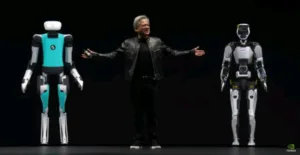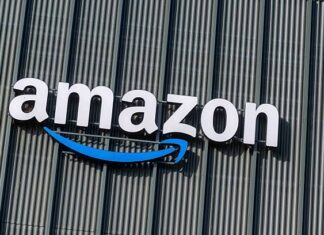When you purchase through links on our site, we may earn an affiliate commission. This doesn’t affect our editorial independence.
NVIDIA’s CEO unveils the AI Robot TITAN, showcasing advancements in physical AI. This is the future being marketed by the emerging Physical AI sector. It’s a future where robots, such as TITAN, manage roles considered too monotonous, dirty, or hazardous for humans.
Yet, as these self-operating devices transition from the lab to the production line, an important question arises. Is this advancement in technology a genuine endeavour to uplift humanity?
Or is it merely another stage in a corporate-driven evolution that will disrupt the lives of countless workers?
A Notable Advancement in Physical AI
RoboForce’s TITAN robot, featured by NVIDIA, marks a significant advancement in Physical AI. It is capable of performing intricate tasks in unstructured environments. The company has set a goal to liberate people from unpleasant tasks, referencing more than 11,000 letters of intent for its robots.
This swift industrial acceptance indicates an impending change in sectors such as energy, logistics, and manufacturing.

Image source: Nvidia
The drive for automation raises significant concerns about the future of human jobs and who truly benefits from this technological change.
TITAN operates using an advanced 3D foundational model, which provides it with enhanced spatial comprehension. Also, it has a high movement accuracy, achieving millimetre-level accuracy. This indicates that it can operate and work in challenging environments. For instance, it can work in a warehouse or a data centre, without requiring every movement to be precisely programmed by a human engineer.
Boasting an eight-hour runtime and a capacity to handle an 80-pound load, the company has stated that it is ready for production. The rapid shift from research and development to commercial pilot production indicates an industry eager for automation. The first implementations in the energy sector are merely the starting point, with plans for growth in shipping, logistics, mining, and manufacturing.
A Humanitarian Purpose or a Business Strategy?
Leo Ma, CEO and founder of RoboForce, describes the company’s mission in memorable phrases: to “liberate humans from tedious, filthy, and perilous tasks.” Also, it is aiming to “tackle persistent labour challenges for the advancement of humanity.”

Image source: Crunchbase
This is an engaging story, indicating a future of relaxation and artistic endeavours for a labour force freed from hard work. Nevertheless, one should examine the wording of corporate statements closely.
The phrase “Robo-Labour” indicates that its primary purpose is to substitute for human labour. It offers businesses an unending, non-union, and endlessly scalable labour force that requires no healthcare, sick leave, or retirement plans. This make the financial motivation to replace human workers becomes irresistible.
This isn’t strictly a conspiracy, but rather an expected result of a system where business interests consistently take precedence over human ones.
See Other Posts on this Site
Robotics: Apple Increasingly Hiring Experts As It Seeks To Develop Robotic Home Appliances With ‘Personality’
The Human Toll of Mechanical Accuracy
The impending surge of automation offers increased efficiency, yet it comes with a significant human cost that is frequently overlooked as just collateral damage. The industries targeted by RoboForce are energy, manufacturing, and logistics. They are the foundations of the contemporary blue-collar labour force. These are more than mere jobs; they are sources of income that provide for families and uphold entire communities.
With TITAN and its successors launching “robot internships,” the humans working alongside them may soon find themselves in a subtle contest that they cannot win. The notion that machines will assume the “dirty” jobs overlooks the truth that for many individuals. These difficult roles provide dignity of labor and a sense of purpose. What happens to the skilled technician, the warehouse manager, or the assembly line employee when a company can acquire a more dependable, affordable option?
The job market is poised to be drastically shaken up. There is going to be a social and economic restructuring that will challenge the core of society. Companies benefiting from this change could invest in retraining and aiding the individuals they make obsolete.
The rapid pace of this technological implementation suggests that the business sector is relentlessly pursuing automation.








